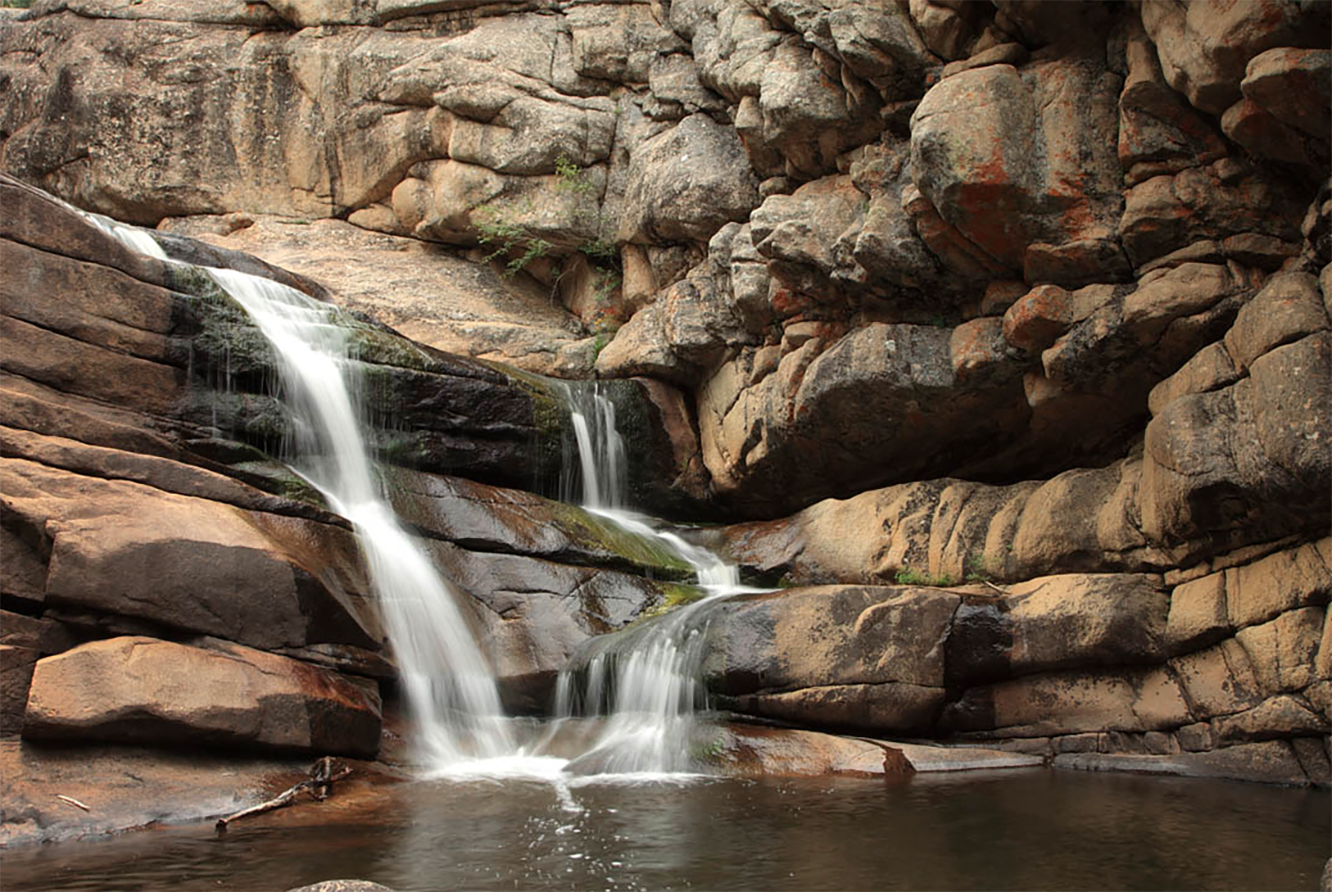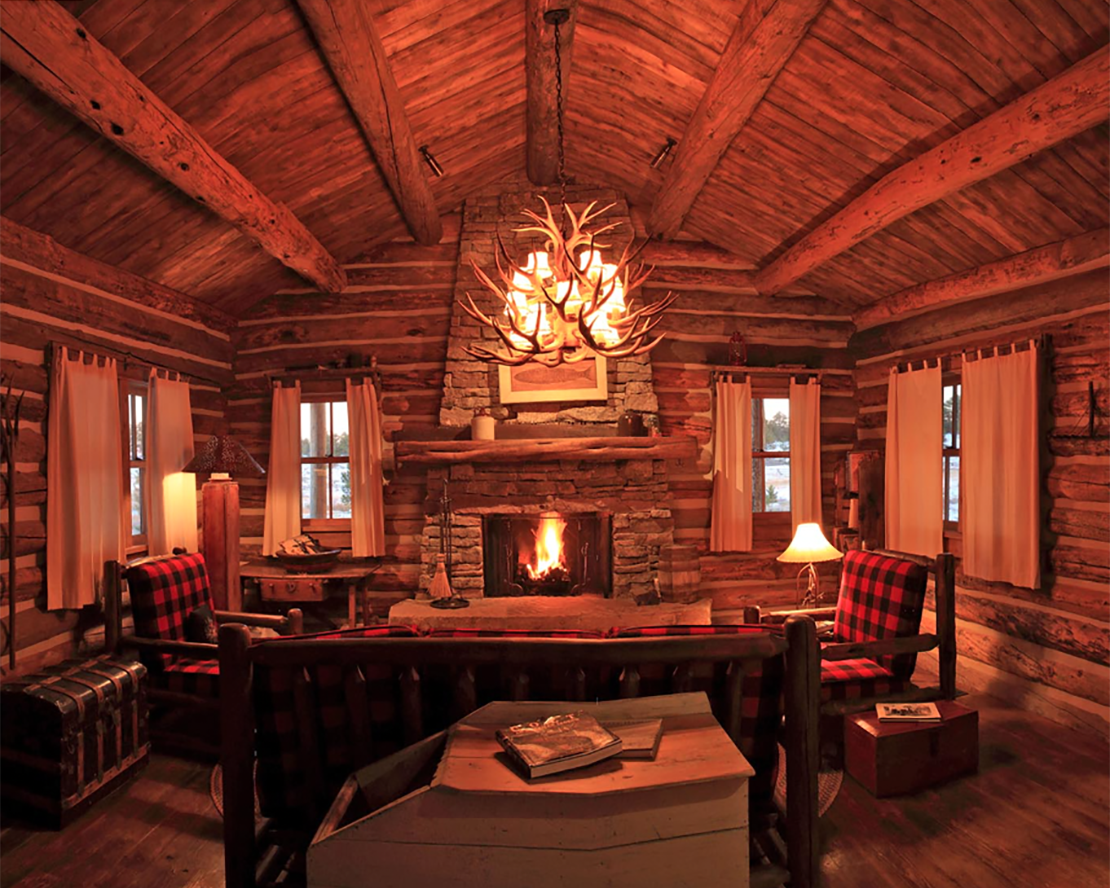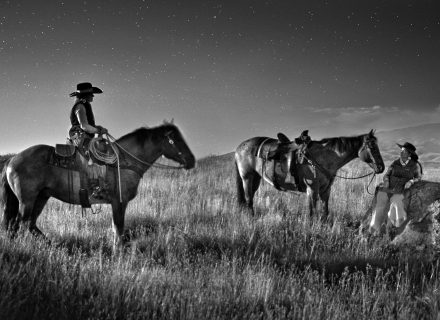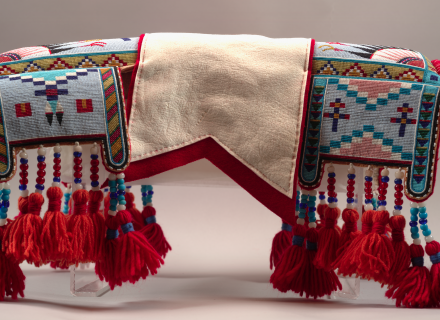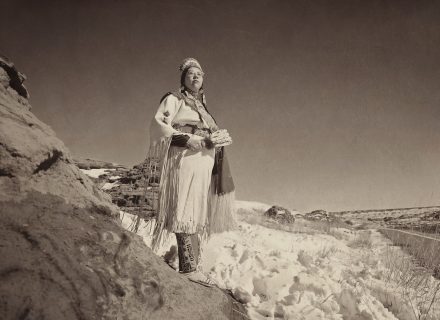Old-school Western gear made by a new generation of craftsmen pairs perfectly with traditional art at the Wyoming ranch of Art Nicholas.
Collecting art wasn’t exactly top of mind when Art Nicholas was growing up on a cow-calf ranch in rural Nebraska. Back then, he was learning the ropes with saddles, spurs, and rawhide braiding. Little could he have imagined how that very gear would one day take a place of prominence in his living room. But that’s exactly what happened at Wagonhound Land and Livestock, the working ranch in Douglas, Wyoming, that Nicholas shares with his wife, Catherine, and a cavalcade of children and grandchildren.
“Catherine and I began collecting paintings and sculpture, and somewhere along the way, these TCAA pieces became important parts of our collection,” Nicholas says. “What makes them special is that they’re more than just representations of an idea or theme. They’re practical pieces that are just as beautiful as our more traditional art.”
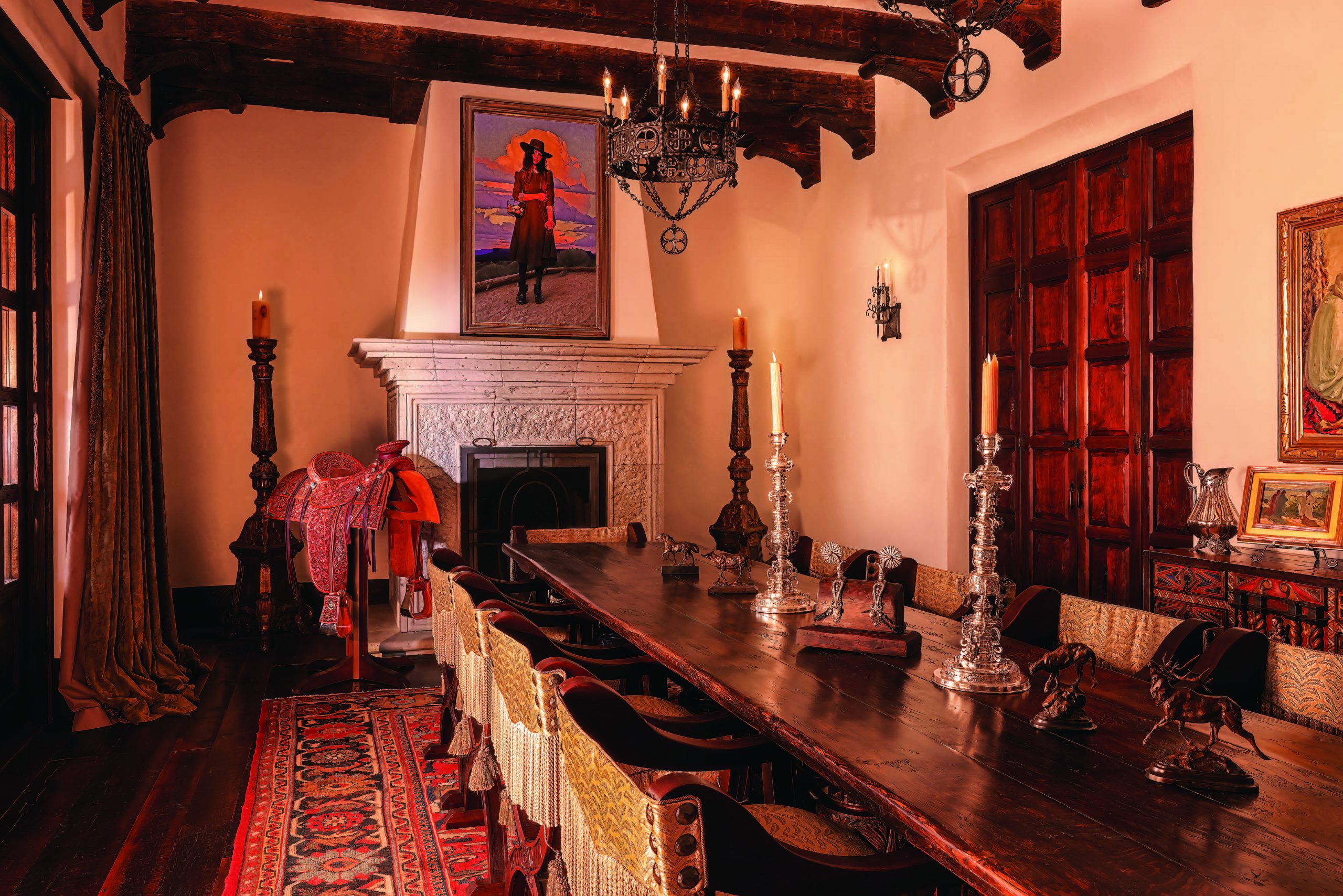 Mark Dahl buckaroo-style spurs (2008) and John Willemsma saddle
Mark Dahl buckaroo-style spurs (2008) and John Willemsma saddle
For the uninitiated, the TCAA (Traditional Cowboy Arts Association) was formed in partnership with the National Cowboy & Western Heritage Museum in Oklahoma City in 1998. Its mission is simple: preserve and honor the cowboy arts. “Everything these artisans make is a ‘working’ work of art and 100 percent functional,” explains Seth Spillman, the museum’s chief marketing and communications officer. “We took action because we realized that many of these Western disciplines were in danger of going away.”
In an effort to protect and promote trades like saddlemaking, bit and spur making, silversmithing, and rawhide braiding, the TCAA offers fellowships and scholarships, while the museum offers a means for reaching a wider audience with the traditional cowboy arts.
“For those in the know, the craftsmanship involved in these pieces is obvious. For those who aren’t aware, it may not be,” Spillman says. “In a mass-manufactured world, we have the opportunity to show people there’s a different way. We can introduce them to these craftsmen and let each piece of work speak for itself.”
To that end, the museum hosts an annual exhibition and sale, and every October, buyers flock to Oklahoma City to purchase pieces big (saddles) and small (belt buckles, bits, braid work). They can also rub shoulders with the makers. Nicholas attended the first show in 1999, and he kept coming back. Now that he’s retired, he doesn’t get back as often as he’d like, but he maintains that the camaraderie at the show is not to be missed.
“Catherine and I believe in the mission, and we appreciate seeing what these people can create. We also like how they collaborate with each other — you’ll see conchos made by a silversmith for a particular saddle,” he says. “The level of knowledge is also impressive. Each artist has a different story, but they all live for what they do. There’s a real passion and love there, which was previously only known to ranchers. Now, through the fellowship programs, they’re able to mentor newcomers to the different crafts and find new customers.”
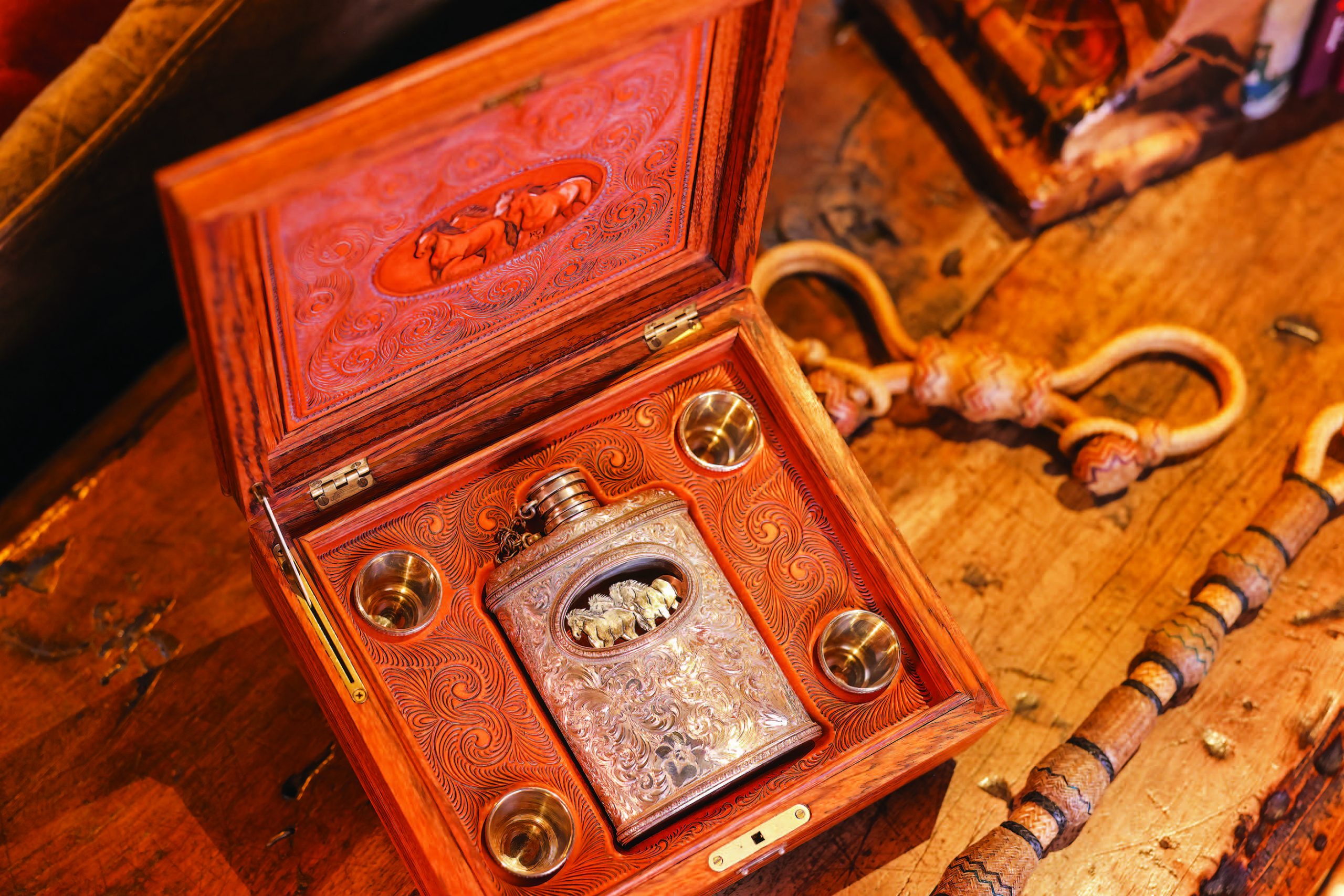 David Alderson silver flask with matching shot glasses, Nate Wald quirt (next to flask), Leland Hensley hobbles (2002)
David Alderson silver flask with matching shot glasses, Nate Wald quirt (next to flask), Leland Hensley hobbles (2002)
The efforts are paying off — both Nicholas and Spillman agree that the audience for cowboy art is growing for a couple of reasons. It’s true that handcrafted skills are beginning to get more of their due, but it’s also been helpful that a lot of people buying second (and third) homes in places like Wyoming, Montana, and Colorado need to fill them with appropriate artwork.
“The art-collecting community has come to value the work and artistry as we have. They’re learning it’s just as wonderful to take in the intricate designs on a bit or a buckle and the elaborate carving on a saddle as it is to see a beautiful painting on the wall or an interesting sculpture displayed on a pedestal. The appreciation has begun to settle in,” Nicholas says. “The nice thing about Western art is that it creates authenticity. When somebody has a home in Jackson and they’re leaning into more outdoor activities and an appreciation of the West, this traditional cowboy art brings the realism of the area to the interiors.”
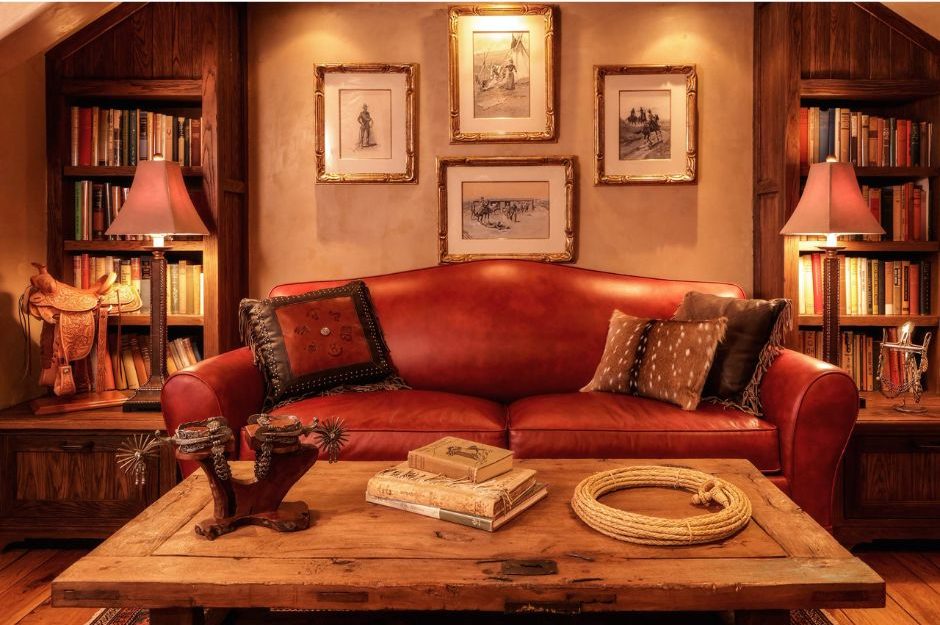 Dale Harwood miniature saddle (2004), Ernie Marsh Californios style spurs, Mike Beaver riata (2002), Mark Dahl Santa Barbara style bit (2003)
Dale Harwood miniature saddle (2004), Ernie Marsh Californios style spurs, Mike Beaver riata (2002), Mark Dahl Santa Barbara style bit (2003)
However, Nicholas contends you don’t need a home on the range to enjoy this artwork. He suggests that people who live in the city but appreciate the West consider a well-placed saddle, too — or braiding, if square footage is precious — in the den alongside their collection of oils and watercolors. Even in limited space, there’s power in numbers when smaller pieces are grouped together on shelves or tabletops. “We’ll even use a collection of bits, buckles, and spurs for centerpieces,” he says. “When you integrate your collection into everyday life, it becomes more alive.”
Over the last two decades, Nicholas has managed to acquire something from almost every single TCAA artist, including multiple saddles, which are placed throughout his house. (“They are beautiful, but they do take up a lot of space,” he admits.) “All the pieces make me smile when I see them, and I’m so happy that my children have incorporated the same concepts in their homes. Our grandchildren are growing up sitting on saddles inside as they start their dreams of riding a horse outside.”
Stay & Play
Book your stay at Reid Creek Lodge at Wagonhound Land and Livestock — a place where life truly imitates art.
The Nicholases are ready to share their incredible views — and a peek at some of their artwork — with guests who book passage to their brand-new seasonal guest lodge. "Reid Creek Lodge is a very special place — a true mountain destination — bringing outdoor pursuits, wellness, and luxury amenities to guests in a thoughtful, personalized way," says Andrea Nicholas Perdue, CEO of Wagonhound Holdings (and Art's daughter). The 8,000-square-foot lodge is situated on the family's 300,000-acre property in the heart of the Laramie Range in the Rocky Mountains. The lodge features plenty of charm — exposed beams, well-appointed furnishings — and can sleep 22 comfortably.
Once you've settled in, a team of private guides is ready to show off the natural surroundings and cater to your preferences with a custom itinerary made up of activities that range from hiking, horseback riding, and fishing to skeet shooting, archery, yoga, and spa time. Guests are also welcome to explore the nearby trails on foot or electric bike or spend the day hanging out by one of the lakes. Once everyone has worked up an appetite, a private chef stands at the ready with delicious offerings from a custom menu. Days kick off with a family-style breakfast, and lunch is set up around the specific adventure planned for the day. After a long day, spend happy hour on a relaxing creekside cocktail wagon ride before sitting down for supper at the lodge. And fear not. There's even a plan for late-night snacks: s'mores around the campfire.
Accommodations at Reid Creek Ranch start at $15,000 per night. Book reservations at wagonhound.com/reidcreeklodge.
See And Shop The TCAA Show
The Traditional Cowboy Arts Association (TCAA) will showcase the best of saddlemaking, bit and spur making, silversmithing, and rawhide braiding at its annual sale and exhibition at the National Cowboy & Western Heritage Museum in Oklahoma City. The exhibition opens to the public on October 6. Daytime activities, including an autograph party, are free with museum admission. Works by TCAA artists will be on view through January 2, 2024.
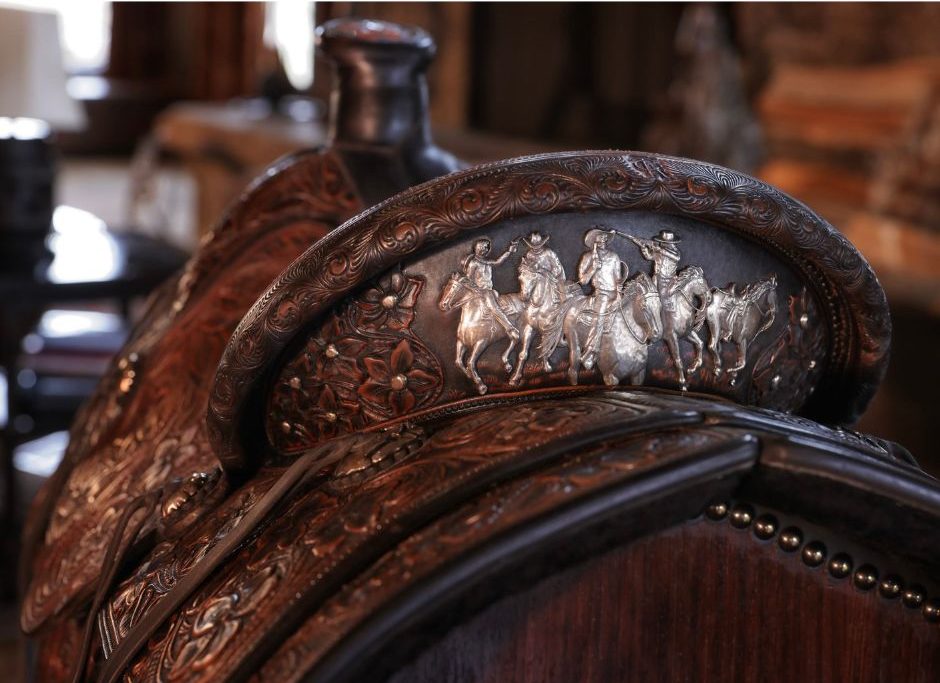 R. C. Bean "The Outlaw" saddle 2009
R. C. Bean "The Outlaw" saddle 2009
Find out more at tcowboyarts.org and tcaa.nationalcowboymuseum.org.
Photography by Kim Cook
This article appears in our August/September 2023, available on newsstands or through our C&I Shop.









